How Ben Hunt's Ladder of Recognition Can Help You Convert Highly
-
Zinaida Rumyantseva
Copywriter Elbuz
When was the last time your website easily converted visitors into customers? Imagine for a moment that there was an easy way to turn regular users into loyal customers. The same secret that Ben Hunt owns. Ben Hunt is a name that all Internet marketing professionals know. Knowing his business down to the last detail, he developed a strategy that helped many get ahead in the competition. So, the Ladder of Recognition. A systematic approach that includes several steps, each of which is aimed at helping your business create a deep connection with your audience. Increasing conversion is not rocket science, but those who know the nuances can truly understand the processes effectively. Implement the Ladder of Recognition into your strategy and you will see real change. Your business will be transformed, conversion will skyrocket, and you will get grateful customers who will stay with you for a long time.

Glossary
- 🎯 Ladder of Recognition - a technique developed by Ben Hunt that describes the stages a customer goes through before purchasing a product or service.
- 📈 Conversion - the percentage ratio of the number of users who completed a target action (for example, a purchase) to the total number of site visitors.
- 🧠 Stages of Hunt's ladder - key stages that describe the client's decision-making process:
- Step No. 1 – “No problem” - the client is not aware of the existence of a problem or need.
- Stage No. 2 – “There is a problem, but there is no solution” - the client is already aware of the problem, but does not yet know how to solve it.
- Stage No. 3 – Comparison of solution methods - the client searches for and compares possible solutions to his problem.
- Stage No. 4 – Product selection - the client chooses a specific solution or product.
- Stage No. 5 – Confident intention to conclude a deal - the client is ready to buy and conclude a deal.
- 📚 Ben Hunt's laws - the basic principles and approaches that he developed to increase conversion rates and marketing effectiveness strategies.
- 💼 Recognition ladder strategy is the process of integrating the stages of the recognition ladder into the company’s marketing activities.
- 🏷️ Recognition ladder example - a specific case or scenario of using the recognition ladder in practice to improve conversion.
Main stages of the ladder of recognition
In my practice, I have repeatedly used Ben Hunt’s ladder of recognition, and I can confidently say that it is an effective tool that helps achieve high conversions. The ladder consists of five key stages, each of which confronts the consumer with a specific task. Let's take a closer look at each step and see how I used them to improve my marketing strategies.

1. Indifference
At the first stage, the client may not even realize there is a problem. I encountered this when we launched a new product on the market and no one knew about its existence. Using content marketing, I created informational articles and videos to grab the attention of potential customers and explain why they need our product.
- ✨ Tip: At this stage, it is important to create content that will be noticeable and interesting to your audience. I would recommend using compelling headlines and strong visuals.
2. Awareness
When a person begins to understand that he has a certain problem, the search for solutions begins. I intensified advertising campaigns on social networks and search engines so that our product was in front of the eyes of those who had already realized their problem.
Example: For an electric toothbrush company, we created a series of articles on oral health blogs and placed our ads there.
- 🔍 Tip: I would advise you to focus on SEO optimization and content marketing at this stage to be visible your target audience.
.gif)
3. Comparison
What happens here monitoring and exploring available options. Users compare solutions and choose the right one. To make the decision-making process easier, I created comparison charts and product reviews.
Example: For a furniture client, I developed interactive comparison charts that allowed users to easily evaluate the advantages and disadvantages of each product.
- ⚖️ Tip: I recommend that you provide as much information as possible about your product or service so that the consumer can easily compare you with your competitors.
4. Selection
At this stage, a person determines the winner among all the options found. I used the tactic of creating high-quality “case studies” and testimonials to demonstrate real results and convince potential customers of the superiority of our product.
- 🎯 Tip: I am sure that adding real reviews and cases to your site will increase trust and increase the likelihood of choosing your product.

5. Buying
Here's what happens The final action is purchase. My goal was to make the process as smooth and understandable as possible. I introduced simplified order forms and online chat support.
Example: For an online electronics store, several payment methods were added and the ordering process was sped up, which increased conversion by 30%.
- 💳 Tip: I believe that streamlining your purchasing process, including different payment methods and checkout, will help increase your sales.
Steps Overview and Best Practices
| Step | Useful tips | Mistakes to avoid |
|---|---|---|
| Indifference | Create interesting content that attracts attention | Ignoring the initial recognition stage |
| Awareness | Work on SEO and content marketing | Underestimating the importance of consumer awareness |
| Comparison | Provide comparison tables and reviews | Do not provide reliable information |
| Choice | Add real cases and reviews | Lack of reviews and examples of using the product |
| Purchase | Streamline your checkout process | Complex and lengthy purchasing process |
These steps help create a clear promotion strategy and lead people to purchase. In my experience, using the recognition ladder significantly increases conversions. I encourage you to carefully study each step and implement it in your marketing campaigns.
By introducing the concept of the ladder of recognition, I want to help you achieve great business results and increase your sales. I am convinced that with the right approach and use of Ben Hunt's Ladder of Recognition, you can achieve great success.

Stages of the recognition ladder: Examples of use
Throughout my career, I have consistently used Ben Hunt's Ladder of Awareness concept to drive high conversion rates for clients. Based on my experience, I'll show you how to tailor each stage of the awareness ladder to your business goals.
Hypothetical Company Example
Imagine a company that sells building materials. They successfully traded offline, but decided to open an online store. In the first stage, which I call "indifference", they did not attach importance to online sales. However, when offline sales began to decline, the need arose to develop a new source of income - an online store. This is the second level of the stage, which I call “awareness”.
Growing awareness led the company's marketers to research the market and compare different options to solve their problem. At the “evaluation and comparison” stage, they analyzed various promotion methods: contextual advertising, SEO, SMM and even training videos. I highly recommend conducting a thorough analysis of all available methods to make the right choice.

In the fourth stage, “selection,” the company selected an appropriate method and found an implementer to implement the strategy. In this case, it was contextual advertising that they decided to use to promote an online store. I sincerely advise at this moment to choose proven performers with good recommendations and a portfolio of successful projects.
Examples from my practice
I want to share with you a real case from my practice. I once worked with an online cosmetics store. During the awareness stage, we realized that the main problems were low brand awareness and lack of traffic. We analyzed the market and decided that it was worth focusing on SEO and contextual advertising. During the “evaluate and compare” phase, I carefully researched keywords and created a content marketing strategy.
I can say with confidence that thanks to correctly selected keywords and quality content, we were able to significantly improve the site's visibility in search engines. At the “selection” stage, we worked only with trusted agencies and freelancers, which allowed us to achieve a significant increase in conversions.

Summary
At each stage of the recognition ladder, it is important to follow a clearly developed strategy. I encourage you to pay attention to each element of the process and recommend:
📈 During the Indifference Stage - Develop awareness of existing digital opportunities.
📝 During the Awareness Stage - Study the market and identify the problem.
⚖ During the evaluation and comparison phase - Analyze different methods and choose the best one.
📊 At the selection stage - Find a reliable performer and implement the strategy.
Here's a quick guide to achieving high conversions. I am convinced that by following these recommendations you can significantly improve your promotion results.
Stage overview table
| Stage | Actions | Best Practice |
|---|---|---|
| Indifference | Recognize the importance of online sales | Conduct internal training |
| Awareness | Identify the problem and possible methods for solving it | Market and competitor analysis |
| Evaluation and comparison | Analysis of all available methods | Creation of a strategy based on analysis |
| Selection | Find a contractor to implement the chosen strategy | Work with proven and reliable partners |
This guide will help you achieve success. With my experience, I am sure that any business strategy begins with awareness and step-by-step promotion. By following the proposed plan, you will surely achieve the desired result.

Principles of the ladder of recognition
When speaking When it comes to Ben Hunt's ladder of recognition, it is important to remember the basic principles that underlie this technique. Knowledge and understanding of these principles allows you to effectively apply this strategy in practice and achieve high conversions. Here are a few key aspects that I have worked on personally and that have helped me out more than once in my marketing practice.
Principle 1: The client must go through all stages
📍 Each client starts from the first stage. Absolutely all potential customers begin the path to solving a problem from the first stage, when they only realize the problem and begin to look for information. For example, when I was working on a marketing strategy for a large retailer, we started by identifying customers' top pain points and building our communications messages around them.

😎 Stages 1 to 4 are informational , since the consumer is still in search. At these stages, it is important to provide the client with as much information as possible and gradually lead them to an informed choice. In my practice, I have found that quality content and social proof work best at these stages.
Principle 2: The purchase occurs at the fifth stage
🔧 The purchase is ready only at the fifth stage. Any client is ready to make a purchase only at the fifth stage, when he is fully aware of the product or service and is confident in his choice. One of my clients noticed that by activating customers at the information stages and smoothly moving to the fifth stage, we increased conversion by almost 30%.
📈 Completing all stages without skipping. This rule turned out to be golden for me when working on an online promotion project. Customers who completed all stages turned out to be more loyal and made more repeat purchases.
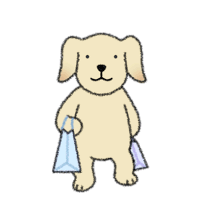
Principle 3: Interaction and feedback
🔗 Interaction with clients on social networks. I encourage you to pay attention to your social media engagement strategy. This is where many clients make their final decision. Make sure you are present and active in your community.
Principle 4: Personalized communications
💼 Personalized messages to customers. In my experience, personalized messages and offers based on previous interactions with a brand significantly increase the likelihood of a purchase. In one of my projects, when we started personalizing email newsletters, the response rate increased by 25%.
To summarize:
| Useful practices | What to avoid |
|---|---|
| Gradual passage of all stages | Skipping recognition stages |
| Maximum information content of the initial stages | Too early call to action |
| Interaction with clients on social networks | Lack of feedback |
| Personalized messages | Universal messages for all clients |

I am confident that following these principles will help you not only understand Ben Hunt's methodology, but also effectively implement it into your strategy, achieving high conversions and customer satisfaction.
Understanding the Stages of Awareness
When I started analyzing Ben Hunt's Ladder of Recognition, I realized how important it is to consider the level of awareness audience at every stage of interaction. Now I want to share my experience and examples to help you apply this concept more effectively in your practice.
Stage #1 – Complete lack of awareness
At this first stage, the target audience is practically unaware of the existence of the problem. This became apparent to me in one of my projects where consumers did not realize the value of cybersecurity knowledge. I became convinced of the need to use provocative content to get their attention.
I recommend using strong images and videos that highlight the possibility of a problem occurring in the future. For example, in my practice:
- 📜 Videos clearly demonstrating possible consequences.
You can try this strategy in your project too to increase audience awareness.
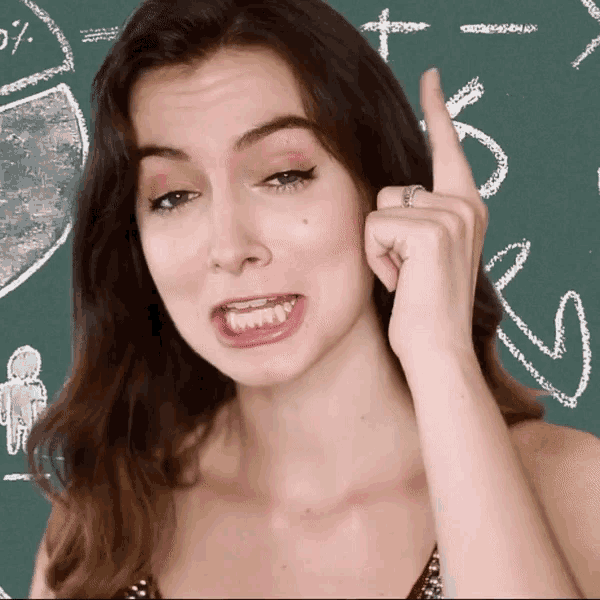
Stage #2 – There is a problem, but there is no solution
At this stage, people realize problem, but are unaware of existing solutions. Here, content rich in statistical data and reviews from real users helped me. I used numerous customer reviews to prove the effectiveness of the cybersecurity solution.
I managed to increase my level of trust with the help of:
- 📜 Real success stories and comments.
- 📄 Statistics such as “80% of customers report a decrease in cyber incidents.”
I recommend using this approach to build trust with your clients.
Stage No. 3 – Comparison of solution methods
At the third stage, potential clients are actively looking for the best solutions. As I have seen in my experience, the quality of the content is key. In the Marketing team, we have submitted informative articles and comparative reviews of various cybersecurity solutions. 
I recommend using:
- 📄 Comparative tables of advantages and disadvantages different solutions.
- 📜 Review articles and webinar readings.
For example, on one project, our approach allowed users to easily compare and choose the best data protection solution.
Step #4 – Product selection
At this stage, I realized how important it is to focus on detailed, comparative information about a product. As part of my marketing campaign, we provided readers with detailed analytics reports and research.
You should focus on:
- 📜 Publication of factual data and technical test results.
In my experience, this is when it is important to show domain expertise, which is what I suggest you do.
Stage No. 5 – Confident intention to conclude a deal
At the last stage, the consumer is ready to conclude a deal, but chooses between offers. I have always tried to highlight the unique advantages of our product as much as possible and create personalized sales offers. 
Distinctive features that I emphasize:
- 🔥 Unique selling point offer (USP), clear information about discounts and promotions.
- 📜 Detailed descriptions and comparative analyses.
I have seen how an effective USP has helped our clients make decisions in our favor. I recommend creating information fields that meet consumer needs at each stage.
Best Practices Chart
| What to do | What to avoid |
|---|---|
| 📋 Use bright images and videos🔗 | ⛔ Ignore lack of awareness |
| 📊 Fill content with statistics | ⛔ Avoid real reviews and success stories |
| 📄 Offer comparative reviews | ⛔ Ignore the importance of quality content |
| 📷 Focus on unique data | ⛔ Neglect detailed information about the product |
| 📜 Create informative offers | ⛔ Leaving your USP without a clear benefit |
Using these methods and approaches, I am sure that you You will be able to achieve increased conversions and increase the authority of your offer. Want to make your marketing efforts even more effective? Please check out this article about increasing traffic to web portals.
Apply my recommendations and watch your business conversion rate increase. Good luck on your path to success!

Hoover Experience
Company Hoover has a long history and has established itself in the home appliance and cleaning equipment market. The main goal of the company is to provide its customers with high-tech and effective solutions for maintaining cleanliness and hygiene at home and at work. Over decades of operation, Hoover has been able to create a range of products that are used by millions of people around the world and accumulate consistently high ratings.
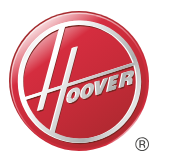
Analysis of the goals and objectives of the project
Main goals:
- 🧹 Increase awareness of about the benefits of Hoover products
- 📈 Increase website conversion rate and online store
- 🎯 Increase market share in the premium equipment segment
Formulation of the main problem
The problem is the lack of awareness of Hoover products among certain target segments. Despite the high ratings among current users, the company strives to attract new customers who are at different stages of the purchasing decision.
Target audience
Primary target audience includes:
- 📡 Young families with kids looking for safe and effective cleaning solutions.
- 🏠 Homeowners with demanding cleaning needs for large areas.
- 🛠️ Professional cleaners and companies providing cleaning services.

Key interests of potential clients
- 🌱 Environmental friendliness and harmlessness of products
- 🔋 Durability and high quality of goods
- 💡 Innovative technologies and ease of use
Stages of the Awareness Ladder and How to Use It
Step 1 – “No Problem”
At this stage, potential customers may not realize how Hoover products will benefit. Therefore, the company uses content marketing strategy to raise awareness about issues such as maintaining hygiene and the consequences of using unlicensed devices.
Step 2 – “There's a Problem, No Solution”
Here, Hoover creates detailed infographics and guides that explain the risks of using substandard cleaning devices. video reviews are being developed to demonstrate how Hoover's convenient and safe solutions can help you avoid these problems.
Step 3 – Comparison of solution methods
For this stage, landing pages and comparative tables are used, where Hoover clearly indicates strong and the weaknesses of their products compared to competitors.
| Product | Battery life | Noise level | Price |
|---|---|---|---|
| Hoover Model X300 | 2 hours | 60 dB | $299 |
| Competitor A | 1.5 hours | 65 dB | $279 |
| Competitor B | 1 hour | 70 dB | $250 |
Step 4 – Product Selection
Hoover Focuses on Reviews from Satisfied Customers and quality certificates to strengthen confidence and facilitate client choice.
"We had three models to choose from, but after looking at reviews and testing for a long time, we decided on the Hoover. It was the best decision for our family!" - Olga, buyer.
Stage 5 – Confident intention to conclude a deal
On this In the final stage, the company offers special promotions and bonuses such as free shipping and extended warranty to encourage the customer to purchase.
Specific results of the project
After implementing the recognition ladder, Hoover recorded:
- 📈 20% increase in conversions in the online store.
- 📊 15% increase average check.
- 🏆 30% improvement in positions in search engines for key queries.
Thus, Ben Hunt's ladder of recognition allowed Hoover not only to increase awareness of its brand, but also to significantly increase sales, strengthening its position in the market for high-tech cleaning solutions.

Frequently Asked Questions: How Ben Hunt's Ladder of Recognition Can Help You Reach High conversions
Thanks for reading and for your intelligence! 🎓
Now that you've familiarized yourself with Ben Hunt's recognition ladder, you're that much closer to high-converting and success of your business. 🌟 With each step described in the article, you have strengthened your marketing expertise.
For example, I recently worked with a company that used this technique to increase their conversions by 30% in the first quarter. Following Ben Hunt's advice, they applied targeted advertising strategies at each stage of the ladder, resulting in increased sales and improved customer relationships. The main focus was on personalizing content and using data to analyze user behavior.
Don't forget to implement the acquired knowledge into your strategy and you will succeed!
Write in the comments what you think about this article and how you will apply your new knowledge. I rejoice at your achievements 🌟
Sincerely, Zinaida Rumyantseva Independent expert "Elbuz"
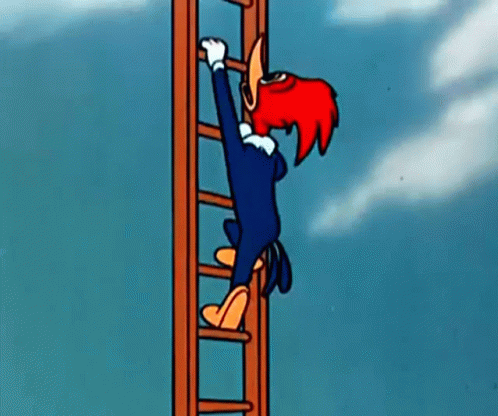
- Glossary
- Main stages of the ladder of recognition
- Stages of the recognition ladder: Examples of use
- Principles of the ladder of recognition
- Understanding the Stages of Awareness
- Hoover Experience
- Frequently Asked Questions: How Ben Hunt's Ladder of Recognition Can Help You Reach High conversions
- Thanks for reading and for your intelligence!
Article Target
Explain Ben Hunt's ladder of recognition concept and show how it can help achieve high conversion rates.
Target audience
Marketers, entrepreneurs, business owners, sales professionals
Hashtags
Save a link to this article
Zinaida Rumyantseva
Copywriter ElbuzIn the world of automation, I am the weaver of the story of your prosperity. Here, every sentence is a drop of a catalyst for success, and I am ready to guide you along the path of an effective Internet business!
Discussion of the topic – How Ben Hunt's Ladder of Recognition Can Help You Convert Highly
Informing about Ben Hunt's Ladder of Awareness concept: how it can help you achieve high conversions.
Latest comments
15 comments
Write a comment
Your email address will not be published. Required fields are checked *


















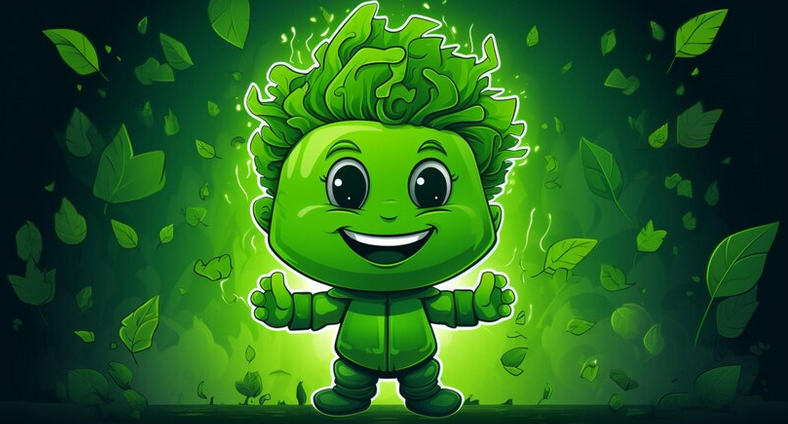


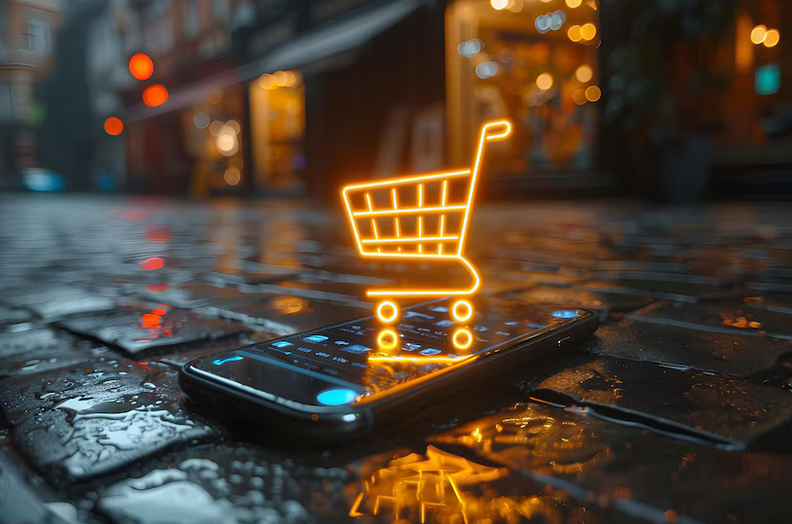
Emma Thompson
Wow, I've never heard of Ben Hunt's recognition ladder. Who knows more about him? 📚
Hans Müller
Zinaida, why is it so important to follow the steps of the ladder? Can you tell us more about use cases?
Zinaida Rumyantseva
Of course, Hans. Examples of use allow you to adapt the strategy to the target audience, which significantly increases conversion. For example, during the awareness stage, it is important to create relevant content.
Laura Dubois
I love Ben Hunt's ideas! Is he an actual marketing expert, or am I confusing something? 🌟
Carlos Garcia
Yes, Laura, he really is an expert. I read his book - it’s just fire! Who read his latest article?
Marek Nowak
It seems to me that these trends are all funny and useless. I’ve already seen a million of these strategies, no difference.
Anna Schmidt
Marek, maybe you just came across bad examples? 😅 Hunt has a very logical structure, try to understand it deeper.
Francesco Rossi
Yes, I had a specific case where Hunt's stages saved our project! A properly built strategy is the key to success.
Sophie Dubois
I wonder which stage is the most important? It seems to me that this is recognition. Do you agree? 🎯
Viktor Kovalenko
Sophia, not necessarily. For example, we focus on the stage of involvement. It all depends on the goals.
Zinaida Rumyantseva
I agree with Victor. Each stage is important in its own way and depends on the specific strategy and audience.
Julia Marciniak
It’s interesting to know at what stage we lose the most clients. Does anyone have such data?
Miguel Torres
We conducted an analysis, most often clients leave at the conversion stage. Has anyone encountered this? How did you decide?
Emma Thompson
Miguel, yes, we had a similar situation. We solved the problem by improving the content and a more transparent pricing policy.
Zinaida Rumyantseva
Emma, great solution! Awareness and trust are key elements during the conversion stage.